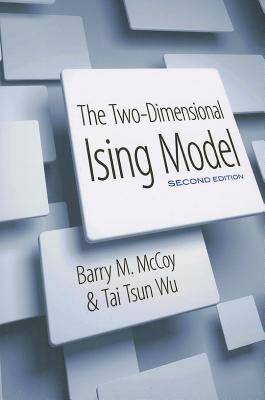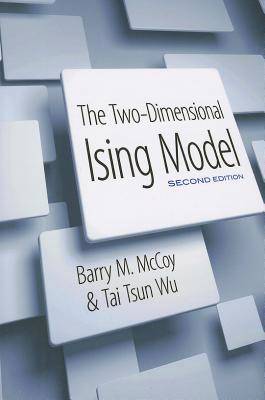
- Afhalen na 1 uur in een winkel met voorraad
- Gratis thuislevering in België vanaf € 30
- Ruim aanbod met 7 miljoen producten
- Afhalen na 1 uur in een winkel met voorraad
- Gratis thuislevering in België vanaf € 30
- Ruim aanbod met 7 miljoen producten
Zoeken
€ 46,45
+ 92 punten
Uitvoering
Omschrijving
"Of all the systems in statistical mechanics on which exact calculations have been performed," declare the authors of this text, "the two-dimensional Ising model is not only the most thoroughly investigated; it is also the richest and most profound." Originally published in 1973, this is the definitive survey of the Ising model, a mathematical model of ferromagnetism in statistical mechanics. This updated edition of the classic text features an extensive section on new developments. Geared toward advanced undergraduates and graduate students of physics, it is also suitable for physicists working in statistical mechanics and related fields.
Following a brief introductory chapter, the book explores statistical mechanics, the one-dimensional Ising model, dimer statistics, specific heat of Onsager's lattice in the absence of a magnetic field, boundary specific heat and magnetization, and boundary spin-spin correlation functions. Subsequent chapters cover the correlation functions, Wiener-Hopf sum equations, spontaneous magnetization, behavior of the correlation functions, asymptotic expansion, and boundary hysteresis and spin probability functions. Two other chapters examine Ising models with random impurities in terms of specific heat and boundary effects. The book concludes with a new chapter examining developments in the field since 1973.
Following a brief introductory chapter, the book explores statistical mechanics, the one-dimensional Ising model, dimer statistics, specific heat of Onsager's lattice in the absence of a magnetic field, boundary specific heat and magnetization, and boundary spin-spin correlation functions. Subsequent chapters cover the correlation functions, Wiener-Hopf sum equations, spontaneous magnetization, behavior of the correlation functions, asymptotic expansion, and boundary hysteresis and spin probability functions. Two other chapters examine Ising models with random impurities in terms of specific heat and boundary effects. The book concludes with a new chapter examining developments in the field since 1973.
Specificaties
Betrokkenen
- Auteur(s):
- Uitgeverij:
Inhoud
- Aantal bladzijden:
- 480
- Taal:
- Engels
Eigenschappen
- Productcode (EAN):
- 9780486493350
- Verschijningsdatum:
- 16/04/2014
- Uitvoering:
- Paperback
- Formaat:
- Trade paperback (VS)
- Afmetingen:
- 157 mm x 231 mm
- Gewicht:
- 657 g

Alleen bij Standaard Boekhandel
+ 92 punten op je klantenkaart van Standaard Boekhandel
Beoordelingen
We publiceren alleen reviews die voldoen aan de voorwaarden voor reviews. Bekijk onze voorwaarden voor reviews.











